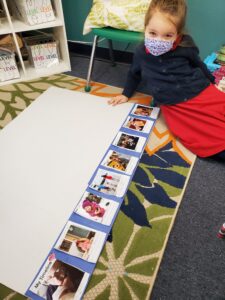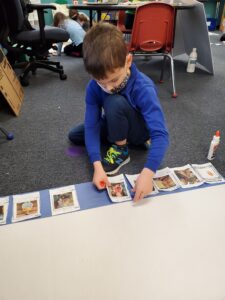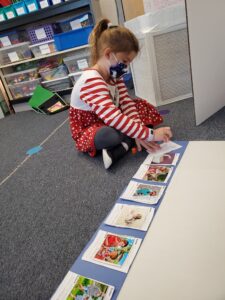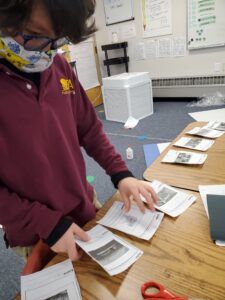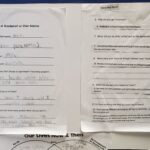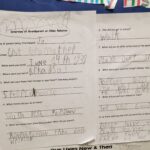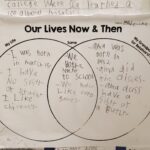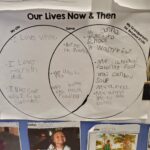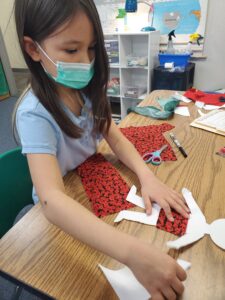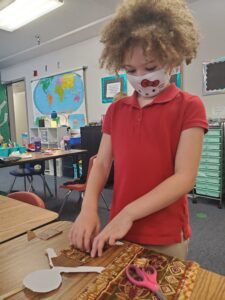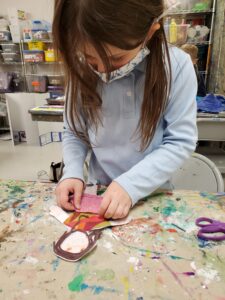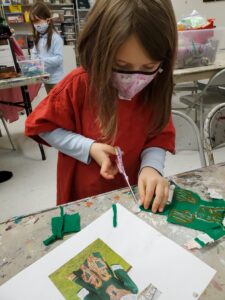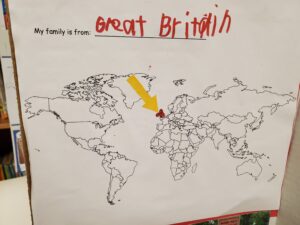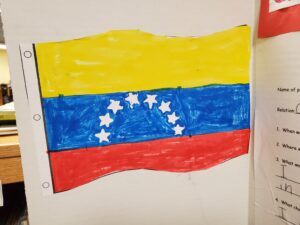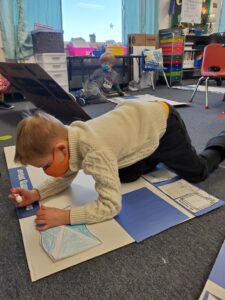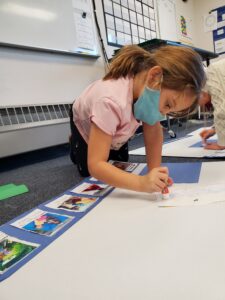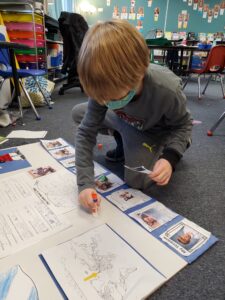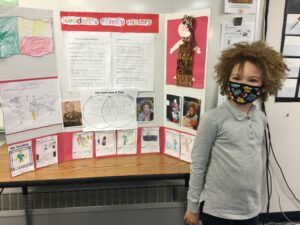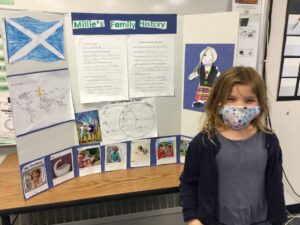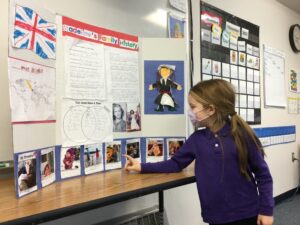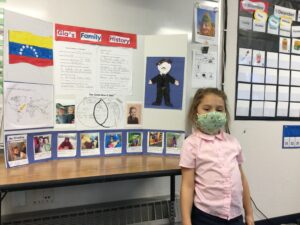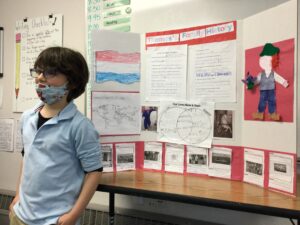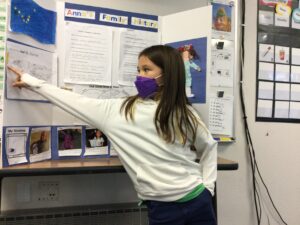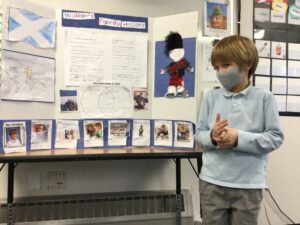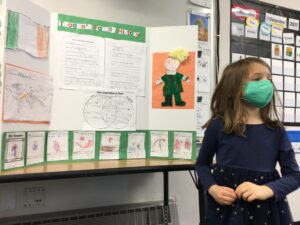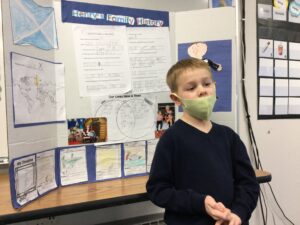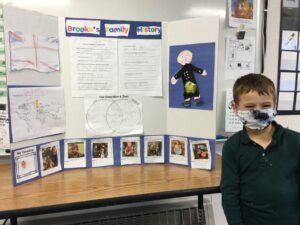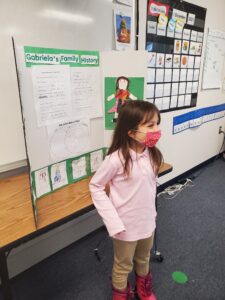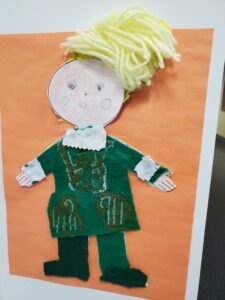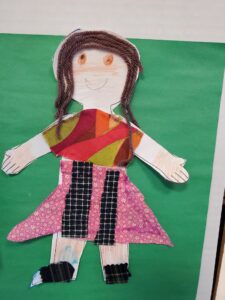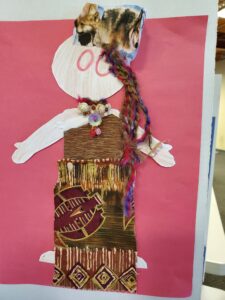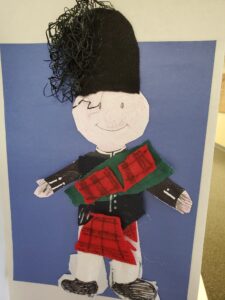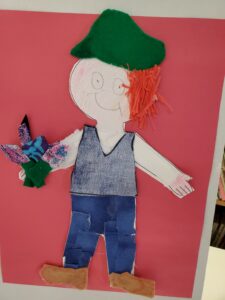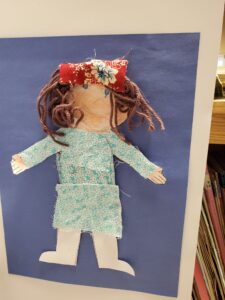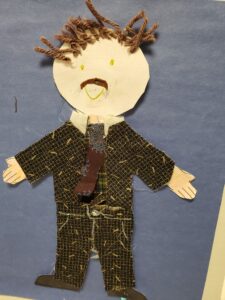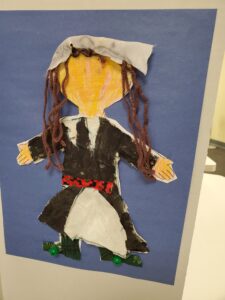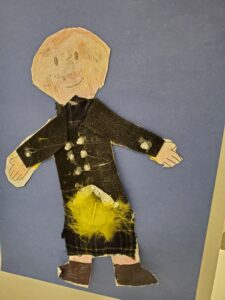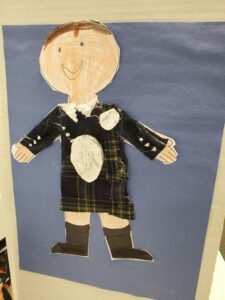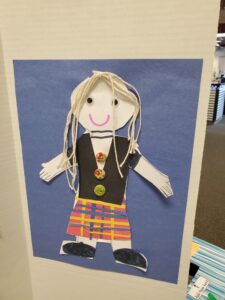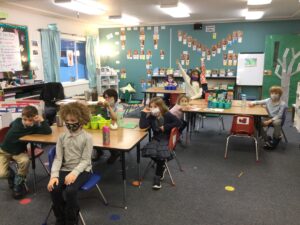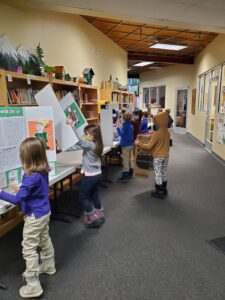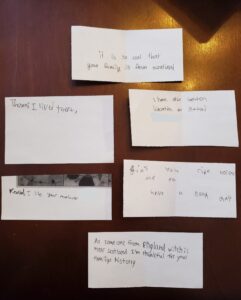One of the advantages of being part of Pacific Northern Academy is the community; a community where everyone knows your name, where you feel safe, and where you feel that you belong. According to the American Psychological Association, “Psychological sense of community encompasses feelings of belonging, identity, emotional connection, and well-being. There are many positive consequences of these feelings–people are better adjusted, feel supported, related more fully to other people, aspire goals beyond their own personal interest, and have stronger levels of social support and social connectedness. A strong sense of community acts as a buffer against threats, provides a place in which to express our identities, and helps us deal with changes in our world.”
Students in the first-grade class recently completed a family history project, in which they had the opportunity to share some of their history, along with that of their family. This project had students “compare perspectives of people in the past to those in the present (CS HIST. Standard 1.3),” while also “working to understand the perspectives and cultures of others (SEL Standard 4),” which in turn, strengthened the community.
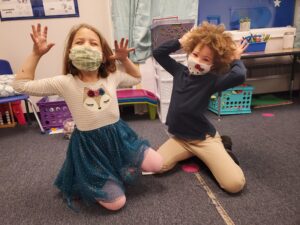
For this project, each student made a personal timeline with seven events from their life. Parents helped students come up with the seven events, and some even gathered photos. Back at school, students cut out their events and glued them in chronological order. Students were excited to see baby photos and that they had also visited places, like Hawaii!
Another key part of the project was interviewing an older relative, such as a grandparent, which they completed over Thanksgiving Break. With the interview questions answered, students were able to fill out a Venn Diagram comparing and contrasting their life with the relative they interviewed. Doing this allowed students to see how things have changed throughout time, like how some people had no running water growing up, or were just told, “good job” when their chores were completed, rather than getting an allowance or a treat. The Venn Diagram also helped students recognize that despite time, there are some things that haven’t changed or that they have in common with their grandparents. For example, one student found out that her grandfather played soccer growing up, just like she does now, while another discovered that her grandmother also loved learning math in school.
Students then made a doll to represent the country/region they were born in or that their ancestors originated from. Using fabric, beads, and other costume-related materials students “dressed” their paper doll the way one of their ancestors might have dressed or the way someone in their native country/region might dress in traditional costume today. They worked on this in the classroom and in the art room using a family photo or online image sent in by their parents for inspiration. These turned out beautifully!
Not only did the students have their dolls to represent their country/region, but they also included their country/regions flag and location on a map.
Using their listening skills and ability to follow directions, students then put all the pieces together on their boards. It was amazing to see students step up to help one another, and the pride they showed for their work.
Finally, it was time to present! Students stood next to their project boards and shared their work with their peers. They learned that their classmates had ancestors or were actually born in places all around the world, including Scotland, Benin, Ireland, Venezuela, Alaska, Brazil, the Netherlands, and Great Britain. It was incredible to see even the shy students present their history with pride and to hear what students found to be the most interesting discoveries of their project.
Audience members shared compliments and asked questions like, “How did your grandmother see without electricity?” All students demonstrated respect for the work their classmates had done and for the history that was shared. They showed excitement for the commonalities, interest in learning about those different from them, and an appreciation for the creativity, skill, and effort that each of their peers put into the project.
But that wasn’t all! Students displayed their projects for all PNA staff and students to see. The comments and praise from the wider PNA community were wonderful! First graders got comments like, “Awesome job!” “I lived there,” and “you ride horses, me too.” This helped first graders feel the support from older students whom they look up to, and also strengthened the sense of belonging and community throughout the entire school.
“Apa PsycNet.” American Psychological Association, American Psychological Association, https://psycnet.apa.org/record/2002-01789-000.
Connecticut Elementary and Secondary Social Studies Frameworks. https://portal.ct.gov/-/media/SDE/Social-Studies/ssframeworks.pdf.

